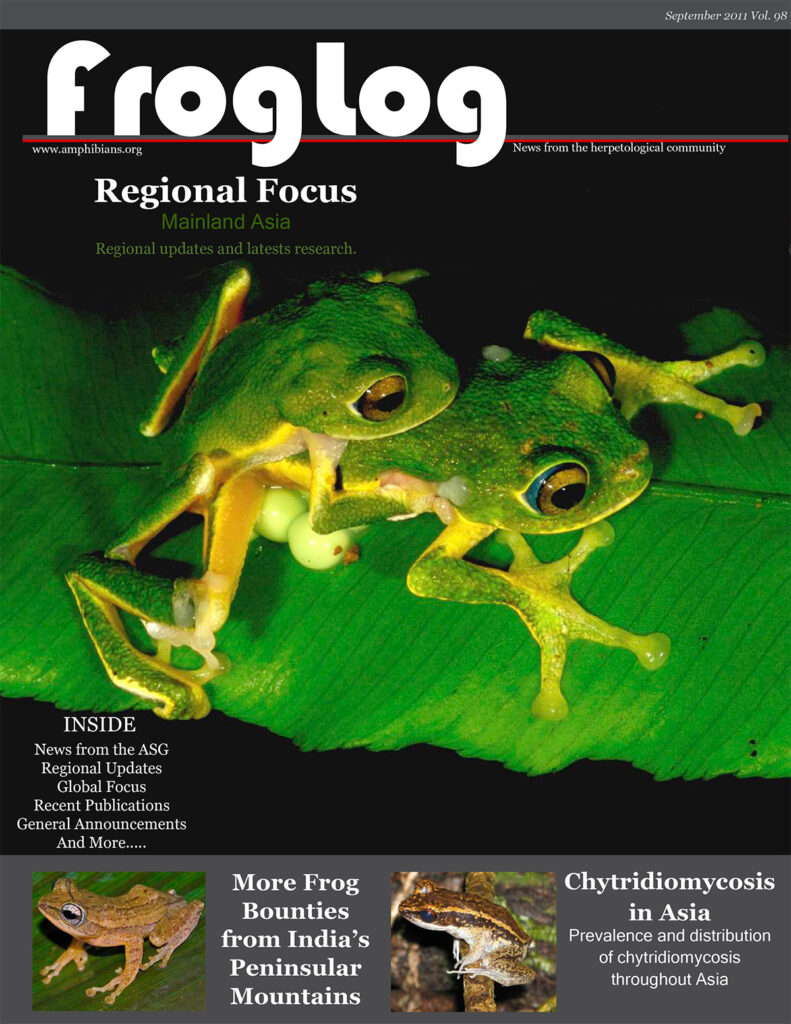Andrea Swei, Jodi J. L. Rowley, Dennis Rödder, Mae L. L. Diesmos, Arvin C. Diesmos, Cheryl J. Briggs, Rafe Brown, Trung Tien Cao, Tina L. Cheng, Rebecca A. Chong, Ben Han, Jean-Marc Hero, Huy Duc Hoang, Mirza D. Kusrini, Duong Thi Thuy Le, Jimmy A. McGuir
Prevalence and distribution of chytridiomycosis throughout Asia News from the herpetological community September 2011 Vol. 98 FrogLog FrogLog Vol. 98 | September 2011 | 33 The fungal disease, chytridiomycosis, caused by the chytrid fungus Batrachochytrium dendrobatidis (Bd) is the greatest known disease threat to vertebrate biodiversity (Skerrat et al 2007; Wake and Vredenburg 2008). Most of the focus and research on the emergence and impact of this disease has been in Australia, USA, Europe, and Central and South America, yet very little is known about the distribution or prevalence of Bd in Asia, a region that comprises a significant portion of global amphibian biodiversity and also contains high rates of endemism. We assembled a large international team of researchers to address the Bd knowledge gap in Asia and recently published our results in PLoS ONE (Swei et al. 2011). Targeting the keritinized epidermal cells of post-metamorphic amphibians and the mouthparts of tadpoles, Bd has already been implicated in the decline of hundreds of amphibian species and is believed to be responsible for the extinction of several species (Skerrat et al 2007; Fisher et al 2010). The Bd pathogen is characterized by its ability to invade a region and quickly spread in a linear wave-like pattern through vast geographic areas while driving whole metapopulations and species to extinction (Vredenburg et al. 2010, Lips et al. 2006). Though Bd research in Asia has been relatively rare, the few studies that have examined Bd in Asia have either failed to find it or found low prevalence. Interestingly, there are also currently no reports of major population declines due to Bd in Asia. This pattern deviates from reports in Central America, California, Europe and Australia. Furthermore, there is growing evidence that Bd intensity on an animal must reach a minimum threshold in order to induce mortality in amphibians; this has been termed the Vredenburg 10,000 rule (Kinney et al. 2011). The few studies that have detected Bd in Asia report very low pathogen intensity (but see Savage et al. 2011)
Topics:
Livestock Diversity and Indigenous Breeds
Livestock Diversity and Indigenous Breeds
Types:
Book, book chapter
published in 2014, English language




